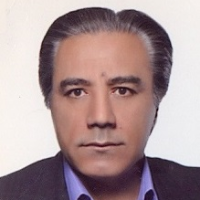Use of Morphometric Indicators to Identify the Source of Salinity in Playa (Case Study Izadkhast Playa Fars Province)
In our country, the climatic conditions are such that in 65% of it, the average annual rainfall is less than 130 mm. Therefore, it has been facing water deficit for a long time. Therefore, recognizing the factors affecting the quality of water resources in these areas is important for protection in order to reduce the vulnerability of these resources. Among the various factors, material and type of rocks are more important in changing the quality of groundwater. On the other hand, due to the involvement of different processes and factors on different lithologies, special landforms appear on the surface of the earth, which, after identification, are useful for showing sensitive areas of the landscape and can be further examined.Therefore, in this research, we try to select Izadkhast basin as a sample of inland Zagros basins that have good but saline water resources. Efficiency of morphometric indices using GWR model to determine the sources of pollution of these waters, or In other words, determine the areas that receive the most impact from a particular formation, and investigation the effects of geology on the salinity spatial distributions of groundwater resources.
First, to identify the sources of salinity, the most sensitive areas to erosion had to be identified, so to achieve the goal, the drainage network of the basin as a landform was extracted from the topographic map of 1:50000 areas. Then, in order to study the differences of landforms in different formations of the region, the hydrographic and physiographic characteristics of the basin were studied that to better study these indicators using the DEM of 12.5 meters in the environment of IDRISI TerrSet 2020 software, the region was divided into 522 sub-basins. After that, the sub-basins layer was placed on the geological layer of the region and cut based on the formations in the region, and for each polygon, area, environment, compaction coefficient, drainage density and drainage texture were evaluated.In the next step, to select the best index, in consideration for the strength of the formations, each of them was selected as the best index using the cluster diagram, classification and using Bakhtiari formation as the validation index. Which has a cluster diagram, field visits and Google Earth image, the drainage texture index was selected as the best indicators for landform analysis.In the next step, multivariate regression methods of OLS and GWR were used to investigate the effects of formations on salinity expansion and their spatial changes to identify sensitive points, relationships between water qualityparameters and the desired index in each formation. So that the water quality data related to 14 observation wells in 2010 (due to more complete data) which among the 16 quality parameter data, after examining the relationship between the parameters, the ones that had the most significant correlation and relationship with the EC parameter, as a variable Dependencies and values of drainage tissue index in the formations in each of the polygons were used as an independent variable for statistical analysis.Finally, according to the significant relationships of water quality parameters with the formations determined in the OLS model and according to the degree of correlation of water quality parameters with drainage tissue index in each polygon in the GWR model, water quality degradation points and salinity producing areas for management, were identified.
Drainage Texture index has completely determined the resistance of different lithologies in the sub-basins in some formations, such as Lahbari, which consists of two types of conglomerate and marl lithology, It is easy to determine the type of rock and even in nonexistence of geological maps with acceptable scale can be used to distinguish the type of rock resistance from topographic maps with existing scales and even to identify lithologies using larger scale topographic maps by extracting drainage network as landform Used drainage tissue index.According to the maps, the highest correlation was related to the sodium, potassium and electrical conductivity parameters and the lowest value was related to the sulfate parameter, while the other parameters also showed a very high correlation with independent variables. In most qualitative parameters such as sodium, potassium, chlorine and electrical conductivity, the highest correlation is related to the west of the basin, which indicates the high impact of the salt diapir in the west of the basin on water resources, and wells that are close to these points have lower quality than wells in higher and farther points.Also, the results of GWR model are directly related to landforms in the region, so that Aghajari Formation and Mol, Champeh and Gori sections that have a significant share in changing the groundwater quality of the region are exposed in the center, north, northeast and northwest of the region as rough country and badland. These landforms, which are the most important forms of erosion in the region, occupy a relatively large part of the basin, which due to erosion, are one of the most important points in changing the quality of groundwater resources in the region.
The results show that the use of drainage tissue index as a characteristic of landforms in the region has easily identified sensitive and key points according to the degree of erosion and laxity and the use of this index in the GWR model shows that Hormoz, Champe, Gori, Mol, Aghajari and Razak are the most important destructive formations of water quality. Therefore, using drainage tissue index to investigate the factors affecting changes in water resources quality along with GWR model and its high power to model the location helps managers and planners helps to identify sensitive points of water resources destruction using surface landforms and to better manage to operate
- حق عضویت دریافتی صرف حمایت از نشریات عضو و نگهداری، تکمیل و توسعه مگیران میشود.
- پرداخت حق اشتراک و دانلود مقالات اجازه بازنشر آن در سایر رسانههای چاپی و دیجیتال را به کاربر نمیدهد.





